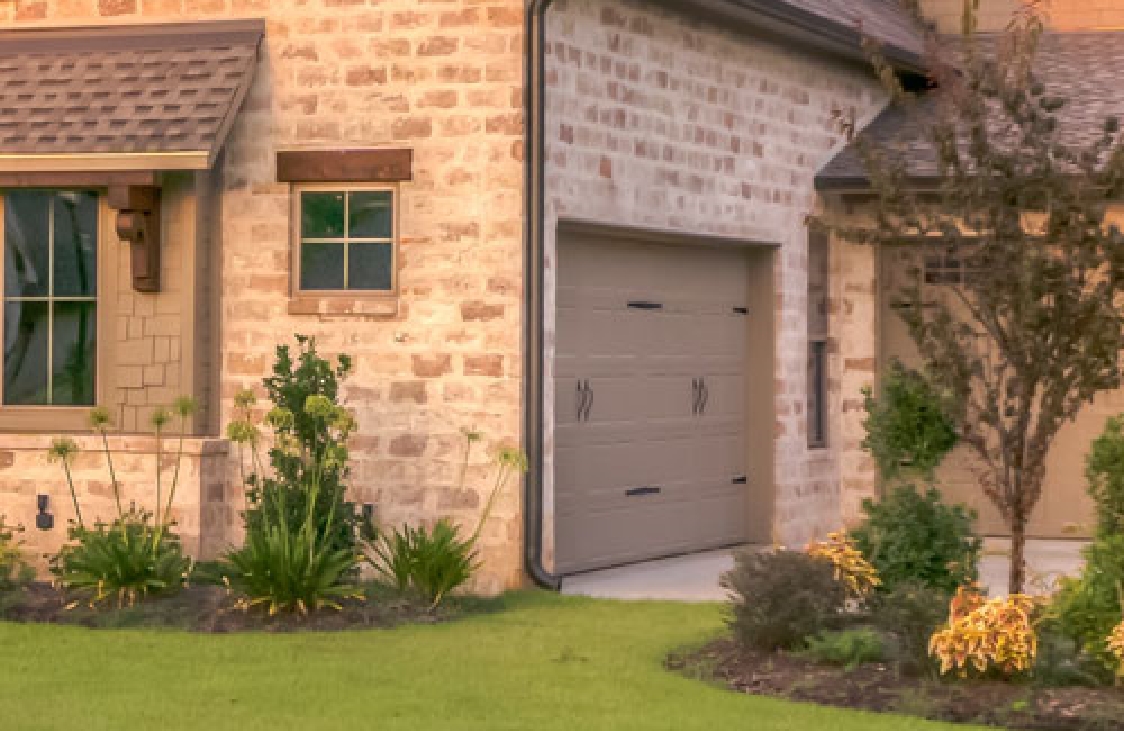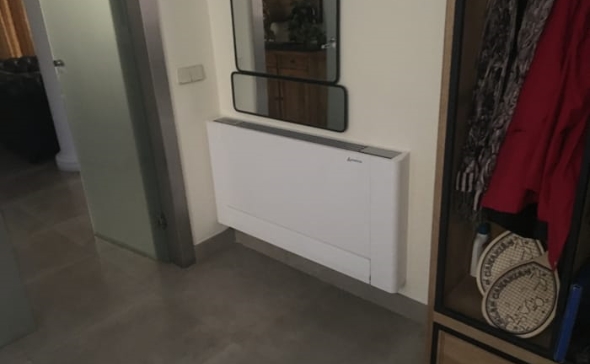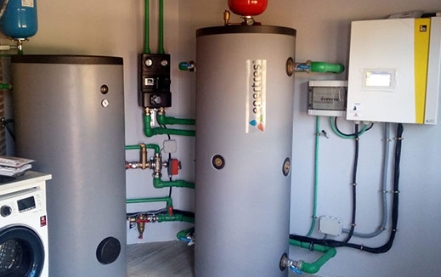We were delighted with the installation. We wanted thermal emitters for our village house and everything went perfectly, they work very well. The installation was very simple and fast, fulfilling perfectly with what they offered us. They are very professional and attentive. We will work with them again.
Replacement of gas boiler for an air-source heat pump with photovoltaic panels

Starting point
Pablo and Lorena are the owners of a house built in the 1990s in Torrelodones (Madrid), a climate zone with very low temperatures during the winter.
The house, with 350m² of heated surface area, has average insulation. All these factors mean that the heating demand is very high, especially during the winter months.
The house had a natural gas boiler and radiators as a heating system. In addition, it had an external DHW accumulator of 300 litres for domestic hot water.

Customer doubts and preferences
When this couple from Torrelodones contacted us, they told us that they wanted to replace their current heating system with a gas boiler and radiators. They were looking for an efficient and renewable system that would also allow them to cool their house in summer.
They had been looking for information for some time and they were quite clear about the best solution for their home: an aerothermal heat pump air conditioning system supported by photovoltaic panels,combined with a fan coil system to provide cooling and heating.
This solution fitted us perfectly since we are a company specialized in this type of heat pump installation with photovoltaic self-consumption. So, we prepared a proposal according to their preferences.
Our proposal
Energanova recommended the installation of an aerothermal heat pump system by the Austrian manufacturer iDM. This equipment seemed to be the most suitable one for Pablo and Lorena’s house since it is designed for very cold climates. In addition, this equipment manages to integrate the control of the air conditioning system and the photovoltaic system. This way, a greater use of photovoltaic production is achieved since electrical surpluses are used for thermal storage.
Regarding photovoltaic production, we presented 2 proposals, the first one self-consumption with storage using lithium batteries, and the second one without them.
Pablo and Lorena were clear that they wanted to achieve a very high level of energy self-sufficiency which would only be possible the installation had a photovoltaic kit with batteries. Therefore, they opted for this option even though the amortization period of a system with batteries was longer than that of a system without them (5-6 years without batteries versus 8-9 years with batteries).
For this couple from Madrid, having greater energy independence was a priority. In addition, when evaluating the investment, they took into account that both the warranty and the lifespan of the equipment were much longer than the payback period.
As usual we prepared a complete energy study free of charge to help them make their decision In the report they could check what the initial investment would be and the approximate annual consumption of the installation. This way, they could have a very approximate value of the savings generated year by year with this new system, compared to the one they had at that moment.
The self-consumption system with aerothermal and photovoltaic panels that we proposed would allow them to cover 100% of their annual energy needs for heating, cooling, and DHW. In addition, it would cover around 60% of the annual consumption of household appliances, lighting, and other electrical equipment.
This coverage is an annual average, as the percentage varies greatly throughout the year. In the months of the greatest solar radiation, it is close to 100%, whereas during winter it is around 40%.
The decision
Pablo and Lorena finally opted for the installation of an aerothermal heat pump from the manufacturer iDM, high-efficiency fan coils for heating and cooling, and a self-consumption photovoltaic kit with batteries.
Once the decision was made and the existing installation was analysed in detail, we decided to establish 4 independent control zones, which would be managed directly from the heat pump itself. To do this, we placed several temperature and humidity probes via radio in different areas of the house.
The improvement of the installation did not involve any additional cost for our customers, and it allowed them to independently regulate the temperature and schedules of the different zones. By doing so, they would increase savings while enjoying greater comfort.
The installation
Finally, the installation consisted of the following elements:
Aerothermal heat pump
Air-to-water aerothermal heat pump by the Austrian manufacturer iDM model AL 24. This equipment was perfectly adapted to the climatic needs of the area, as it maintains very good performance even at very low temperatures.
DHW storage tank
For domestic hot water (DHW) we opted for an Enertres 400-litres storage tank, model DPSA MAX-400, with a large exchange coil to achieve the heat pump’s maximum efficiency.
Heating and cooling buffer tank
For the heating and cooling inertia we installed an Enertres 500-litres storage tank, model DPI -800F.
In addition, we installed an 800-litres storage tank for thermal use of photovoltaic surpluses.
The heat pump is equipped with a Navigator 2.0 control system, which integrates a photovoltaic function. This function makes it possible to use the photovoltaic surplus and store the energy in a thermal form inside the buffer tank, for both summer and winter. If this surplus is produced in winter, it is stored in the form of hot water for heating; while if it is produced in summer, it is stored in the form of cold water for cooling.
This thermal use of photovoltaic surplus is a very effective way to get the most out of the photovoltaic panel installation and therefore turn it into a more profitable investment at any time of the year.
Regulation and control
To have better control of the installation, we placed one humidity and temperature sensor in a representative area of the house. The Navigator Pro control system, which integrates the iDM equipment, allows us to vary the supply temperature based on the information provided by this sensor. This way, we can guarantee comfort throughout the house with the minimum energy cost.
In addition, as each of the fan coil units includes its own regulation, we can have different temperatures in each room, in both heating and cooling modes.
The installation can also be controlled remotely and free of charge through the manufacturer’s app.
Photovoltaic self-consumption
The photovoltaic self-consumption installation consists of a photovoltaic kit of 7,590 kW peak power (22 panels x 345W) with a hybrid inverter brand, model Kostal Plenticore of 8kW, and storage of 20kWh in ByD brand lithium batteries.
According to our studies, we estimate that the photovoltaic production potential will be around 10,000 kWh per year, which means a self-consumption capacity of 85%.
According to this data, out of all the photovoltaic production, it will not be possible to consume approximately 15% of it since there will not be enough consumption in the house and the batteries will be fully charged. This is known as photovoltaic surplus. When these surpluses are produced, the electricity is injected directly into the grid and in exchange for doing so the electricity company will compensate the owners of the installation at a rate of approximately 0.05-0.09€/kWh. In this article, we have summarized the key aspects of the Photovoltaic Self-consumption regulations in Spain.



